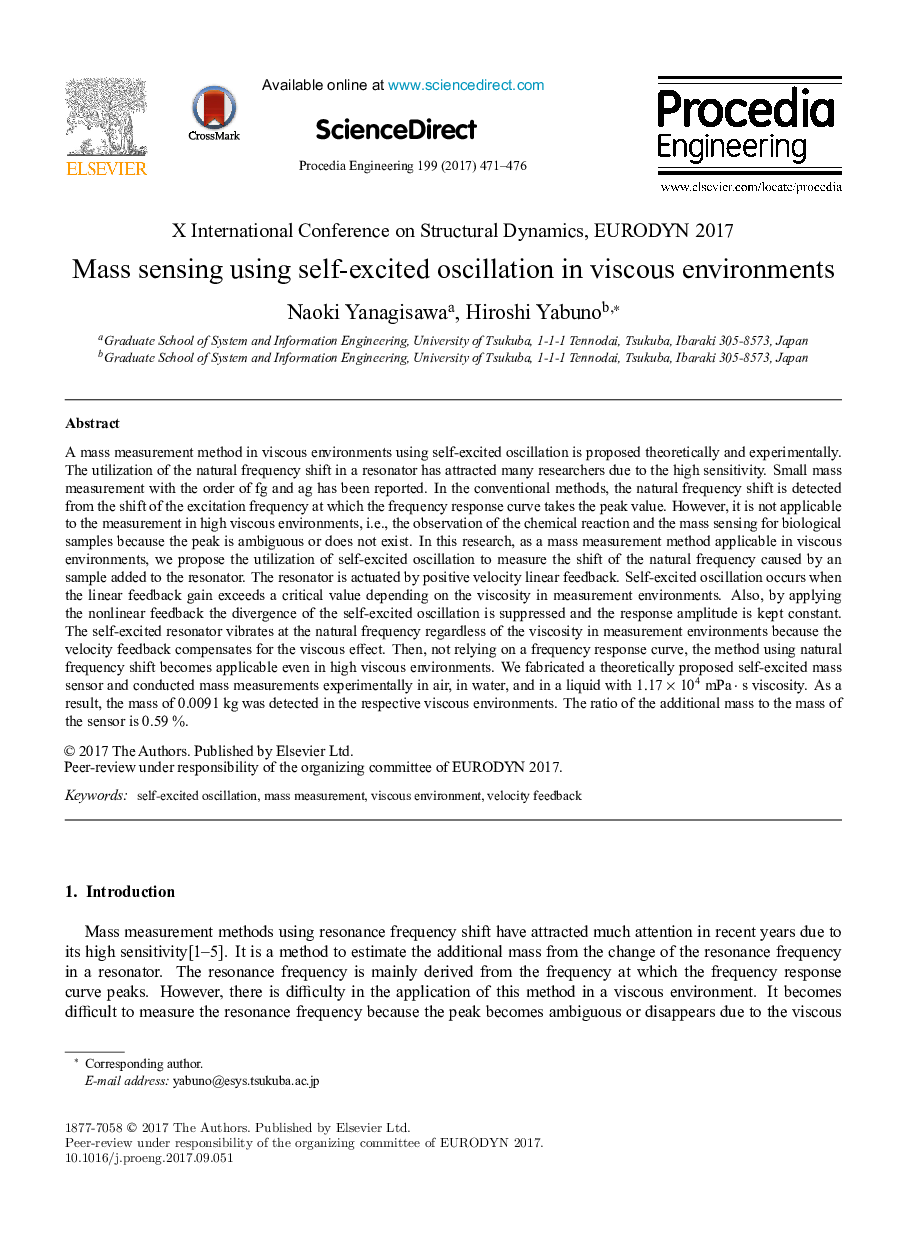| Article ID | Journal | Published Year | Pages | File Type |
|---|---|---|---|---|
| 5026806 | Procedia Engineering | 2017 | 6 Pages |
Abstract
A mass measurement method in viscous environments using self-excited oscillation is proposed theoretically and experimentally. The utilization of the natural frequency shift in a resonator has attracted many researchers due to the high sensitivity. Small mass measurement with the order of fg and ag has been reported. In the conventional methods, the natural frequency shift is detected from the shift of the excitation frequency at which the frequency response curve takes the peak value. However, it is not applicable to the measurement in high viscous environments, i.e., the observation of the chemical reaction and the mass sensing for biological samples because the peak is ambiguous or does not exist. In this research, as a mass measurement method applicable in viscous environments, we propose the utilization of self-excited oscillation to measure the shift of the natural frequency caused by an sample added to the resonator. The resonator is actuated by positive velocity linear feedback. Self-excited oscillation occurs when the linear feedback gain exceeds a critical value depending on the viscosity in measurement environments. Also, by applying the nonlinear feedback the divergence of the self-excited oscillation is suppressed and the response amplitude is kept constant. The self-excited resonator vibrates at the natural frequency regardless of the viscosity in measurement environments because the velocity feedback compensates for the viscous effect. Then, not relying on a frequency response curve, the method using natural frequency shift becomes applicable even in high viscous environments. We fabricated a theoretically proposed self-excited mass sensor and conducted mass measurements experimentally in air, in water, and in a liquid with 1.17 x 104 mPa . s viscosity. As a result, the mass of 0.0091 kg was detected in the respective viscous environments. The ratio of the additional mass to the mass of the sensor is 0.59 %.
Related Topics
Physical Sciences and Engineering
Engineering
Engineering (General)
Authors
Naoki Yanagisawa, Hiroshi Yabuno,
